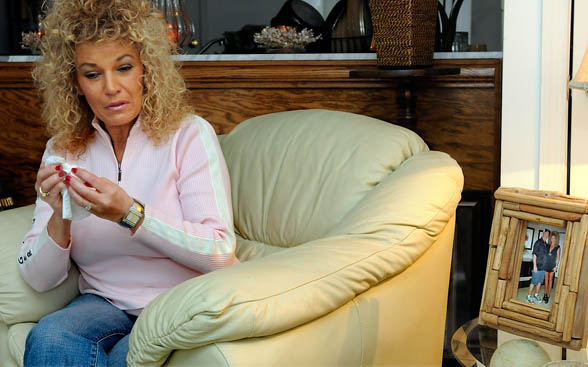Lunchtime update: The first UBB miner testifies
October 8, 2015 by Ken Ward Jr.
We’ll have a story online now with some of the initial testimony of Bobbie Pauley, the first in a parade of former Upper Big Branch coal miners who are expected to testify for the government in the criminal trial of former Massey Energy CEO Don Blankenship.
Pauley took the stand shortly before U.S. District Judge Irene Berger sent the jury out for its daily lunch break. After the jurors left, lawyers for both sides huddled privately with the judge at her bench — a site that is becoming frequent even in the early days of the trial.
Earlier this morning, government expert witness Tracy Stumbo spent the second half of the morning under cross-examination by James Walls, one of the defense attorneys for Blankenship.
Walls took Stumbo back through many of the photographs that he testified about on Wednesday during direct examination by Assistant U.S. Attorney Steve Ruby.
Walls used his questions to make the point that none of the photographs depicted scenes from the Upper Big Branch Mine. In several instances, Walls wanted to point out differences such as the lack of reflective clothing worn by miners in the photos and the lack of a canopy on a mantrip in one of the photos, compared to what Walls suggested one might find in photographs from a Massey operation.
Also, Walls tried to under mine earlier testimony in which Stumbo described the need for frequent — in some cases daily — safety examinations by company firebosses. Stumbo would not admit that areas of a mine where active coal production isn’t occurring shouldn’t be a focus for fireboss examinations.
“If you have a person building a stopping in the [air] return [tunnel], that area has to be pre-shifted,” Stumbo said. “If someone has to go to a pump, that area has to be pre-shifted.”
Stumbo did say he couldn’t provide a firm estimate for the number of miners needed to perform safety work at Upper Big Branch simply by looking at a map of the mine.
“I couldn’t determine the exact number,” Stumbo said. “I would have to do a jobs study.”
Walls also tried — somewhat unsuccessfully — to get Stumbo to agree that companies might have good reasons to use blasting to build ventilation overcasts, rather than building them with continuous mining machines. Walls wanted Stumbo to admit that it might be reasonable for mine operators not to want to pull a continuous mining machine out from producing coal to build an overcast, or that cutting overcasts quickly wears down continuous mining machine bits.

 Subscribe to the Coal Tattoo
Subscribe to the Coal Tattoo
